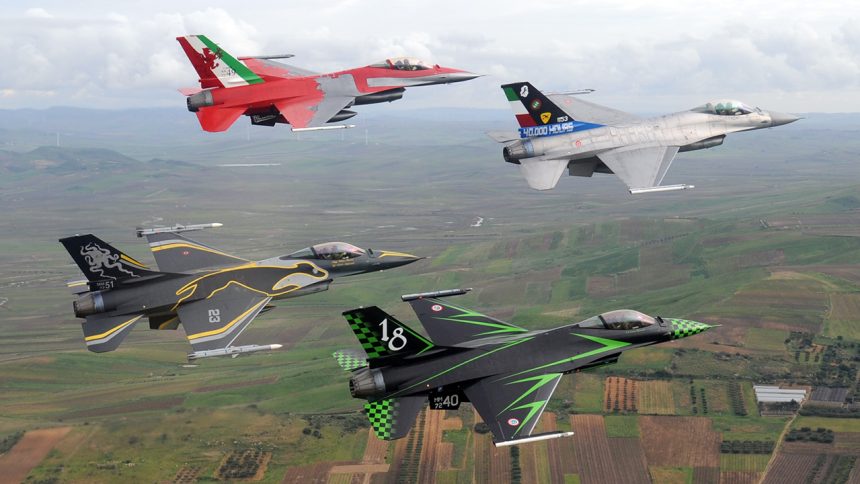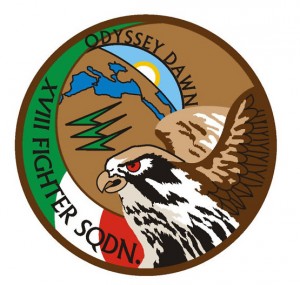Under Peace Caesar program, the Italian Air Force operated a fleet of F-16A Block 15 ADF (Air Defense Fighter) jets upgraded with the “Falcon Up” and “Falcon 2020” modifications. Here’s their story.
On Jan. 20, 2024, the F-16 Fighting Falcon, the “Electric Jet” or simply the “Viper”, as the F-16 is nicknamed by its crews, celebrated the 50th anniversary since its first flight. Throughout the years, the F-16s has become one of the world’s most numerous fighters in service with an active fleet of more than 2,100 aircraft in 25 countries (or 2,800 if we consider also training aircraft and non-combat roles).
For little less than a decade, the F-16 also served with the Italian Air Force, alongside the old F-104s and Tornado F.3s leased by the RAF and guaranteeing the air defense of Italy’s airspace .
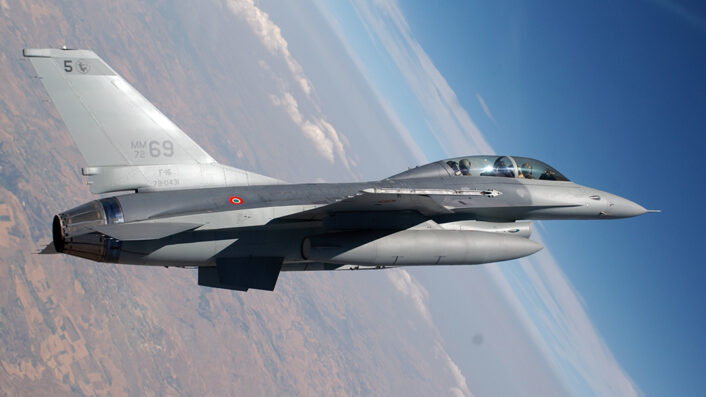
Peace Caesar
The Peace Caesar program officially started on Mar. 15, 2001, with the signing of two Foreign Military Sales Cases following the selection by the Italian MOD, announced on Feb. 1, 2001, of the Lockheed Martin F-16 as the ad-interim fighter needed to fill the gap between the phase-out of the F-104 “Starfighter” (to be completed by Dec. 31, 2004) and the achievement of the “Combat Readiness” of the first squadrons of Eurofighter “Typhoon” (expected by 2010).
The first FMS case dealt with the leasing of 34 F-16s, the other one covered all the activities needed to satisfy the main requirement of the Italian Air Force to have an efficient force of 24 aircraft able to perform at least two sorties on a daily basis.
The package proposed by Lockheed Martin to meet the requirements of the Italian Air Force included a total 45,000 flight hours (to be used between 2004 and 2010) along with all the necessary logistic support, and a leased fleet composed by 30x F-16A Block 15 ADF (Air Defense Fighter) upgraded to the “Falcon Up” and “Falcon 2020” modifications as well as 3x F-16B Block 10 OCU (Operational Capabilities Upgrade) and a single F-16B ADF.
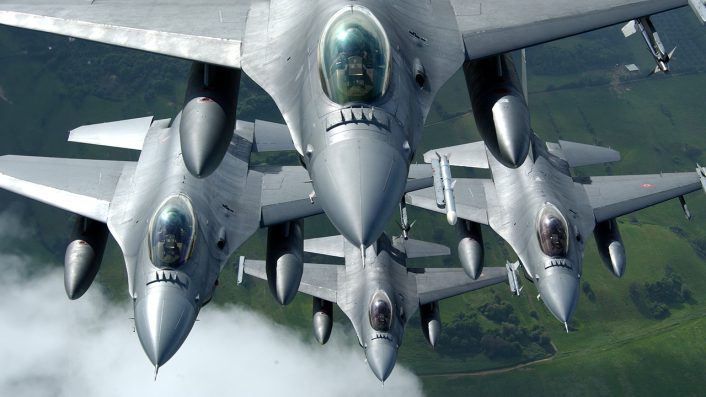
All the aircraft would be equipped with the Pratt & Whitney F100-PW-220E engines and carry AIM-9 “Sidewinder” and AIM-120 “Slammer” air to air missiles.
The leasing contract included also a training package for both flying and maintenance crews: 38 pilots coming from the F-104 and Tornado F.3 lines would be trained by the Arizona ANG in Tucson, Arizona and, among them, 8 would be qualified as IP, Instructor Pilot; 10 would became Flight Lead and 20 would be qualified crews. A total of 119 maintenance technicians, 60% to be instructors, would be trained by LM personnel at Fort Worth, Texas.

Reshaping the Air Defense
At the end of the 1990s, the Italian Air Defense was organized on five Gruppi (Squadrons). One, the 12° Gruppo at Gioia del Colle, was flying the Tornado F.3 leased from RAF, whereas four were equipped with the F-104S/ASA-M: the 10° Gruppo, belonging to the 9° Stormo (Wing) at Grazzanise; the 9° Gruppo of the 4° Stormo at Grosseto; the 18° Gruppo of the 37° Stormo at Trapani; and the 23° Gruppo of the 5° Stormo at Cervia.
Since the 9° Gruppo had already been selected to be the first Eurofighter squadron at Grosseto the remaining three F-104 squadrons were chosen to convert to the F-16.
It was also decided to have the F-16 based at two airbases, Cervia and Trapani, and, as a consequence, the 10° Gruppo would move from Grazzanise to Trapani, to join the 18° Gruppo as child units to the 37° Stormo.
The 23° Gruppo of the 5° Stormo was the first unit to retire the F-104S/ASA-M on Dec. 27, 2002, when it ceased its flying activity with the Starfighter moving most of the airworthy airframes to Grazzanise, Grosseto and Trapani, where the remaining F-104s were still flying.
Following the departure of the 23° Gruppo, Cervia airbase was temporary closed, so as to start the infrastructural works that the airport required in anticipation of the arrival of the first F-16s. While most of its pilots went to Tucson, Arizona, to join the 162nd FW of the Arizona ANG, a handful of crews, those waiting their turn to begin the training courses in the United States, were temporary absorbed by those Gruppi still flying the F-104.
Unexpectedly, the works at Cervia airbase were longer than expected and, consequently, the first F-16s, delivered on Jun. 28, 2003, were “diverted” to the 18° Gruppo, based at Trapani-Birgi airbase, whose last four F-104 had been quickly moved to Grazzanise on April 22 and whose refurbishment works had finished just in time to accommodate the new aircraft.
Unfortunately, even if the Italian officials were waiting for five reconditioned aircraft (3 F-16B and 2 F-16A) only the three twin seats (with serials MM 7266, 7268, 7269) managed to arrive in Italy.
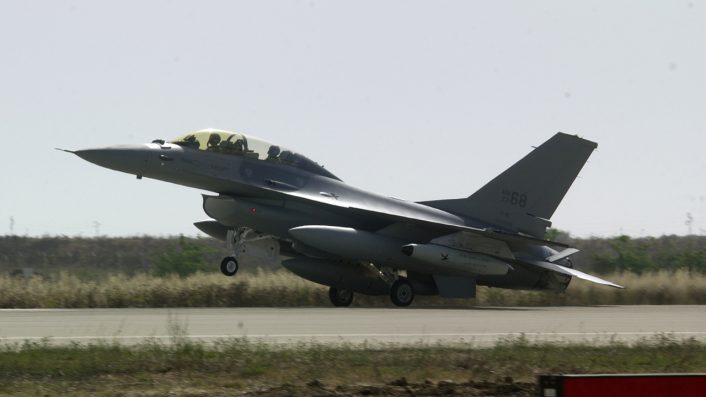
On June 25, 2003, during the initial leg of the delivery flight from Hill AFB to Trapani with a stopover at Lajes Field, an F-16A ADF (serial MM7238, the first aircraft in Italian markings unveiled at Hill AFB on May 9 that year) piloted by Lt. Col. Kurt Tek encountered an emergency situation. The aircraft’s engine entered a backup control mode, which automatically activates when the primary control mode fails, requiring the pilot to land the aircraft promptly.
Three jets continued their flight while another F-16A (MM7246) escorted Lt. Col. Tek’s aircraft to an emergency landing in North Bay, Canada. After resolving the issue, these two F-16s eventually reached Trapani on July 2, 2003.
Official entry into active service
The official delivery ceremony of the first five “Vipers” to the Italian Air Force (ItAF) took place on July 17, 2003, at Trapani Air Base. These aircraft were assigned to the 37th Stormo but carried the markings of both the 18th Gruppo and 23rd Gruppo due to the latter’s extensive experience with the F-16, stationed at the Sicilian airbase while Cervia underwent refurbishment.
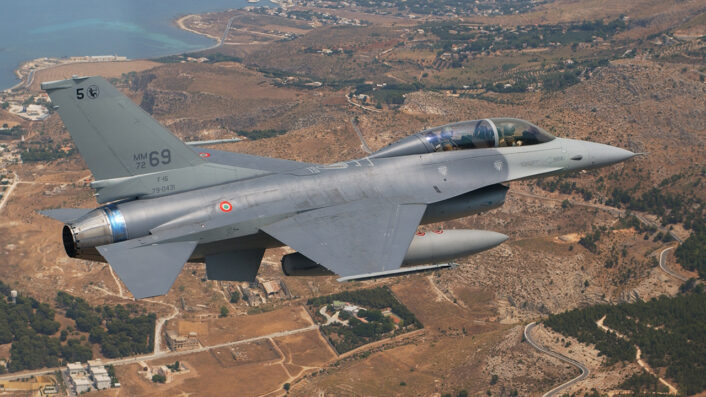
The 23rd Gruppo subsequently relocated to Cervia Air Base on November 14, 2003, with three Lockheed Martin F-16 “Fighting Falcons” adorned with its markings.
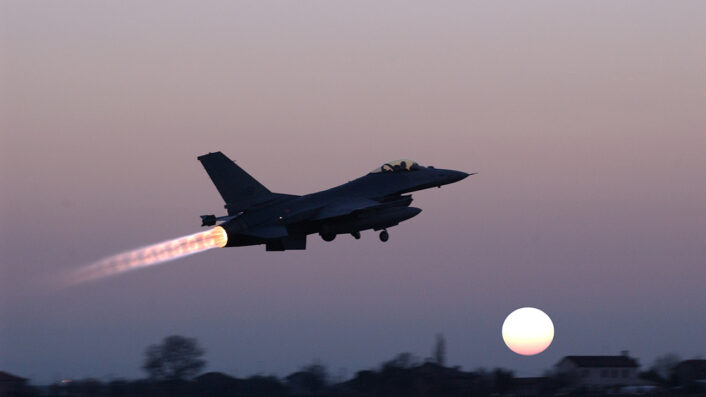
This move marked a significant shift for the squadron, which had ceased operations with the F-104S/ASA-M in anticipation of receiving the new F-16s. The aircraft were transported from Trapani, Sicily, to Cervia on a notable mission, “Veltro 01,” during which the crews engaged in simulated air-to-air exercises over central Italy.
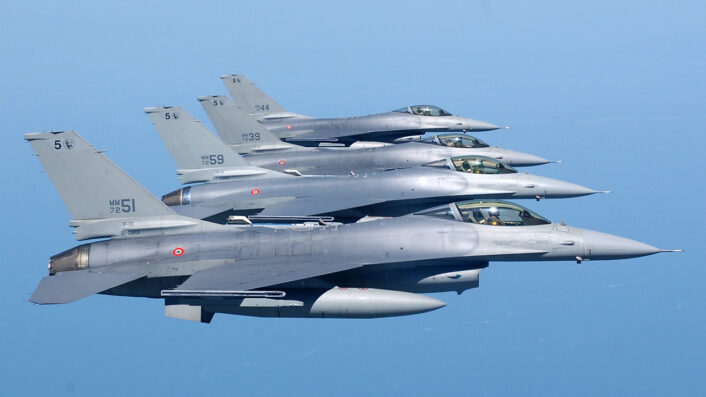
Cervia’s refurbishment delayed the arrival of the F-16s, initially slated for Cervia, leading to their diversion to Trapani-Birgi Air Base, where preparations for their accommodation had been completed just in time.
By November 2003, the 5th Stormo at Cervia had received two twin-seat F-16s (one Block 15 and one Block 10), later returning the Block 10 to Trapani. The 23rd Gruppo’s fleet in Cervia totaled approximately ten airframes, including the twin-seat Block 15 variants.
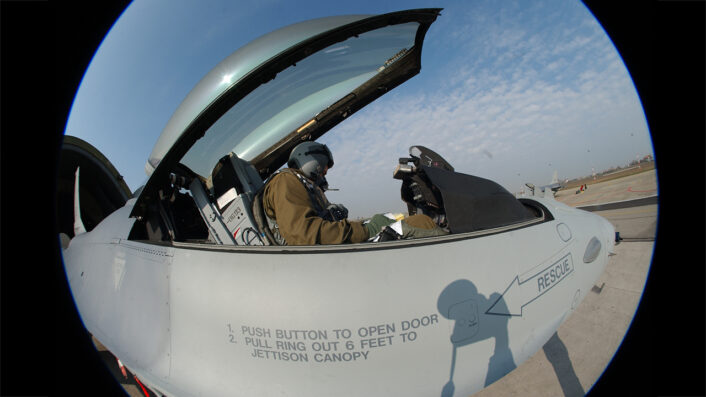
Despite challenges, including lost aircraft due to accidents, the ItAF equipped three squadrons (23rd, 10th, and 18th Gruppo) with 34 F-16s acquired under the “Peace Caesar” program. These F-16s replaced the F-104S-ASAM and enabled the 5th and 37th Stormo to defend Italian airspace until the Eurofighter Typhoon achieved full combat readiness in 2010.
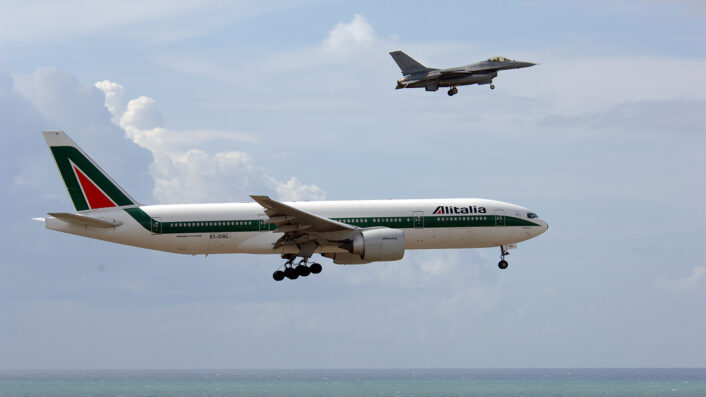
Throughout their career in the Italian Air Force, the F-16s supported the QRA (Quick Reaction Alert) task, conducting several Alert Scrambles.
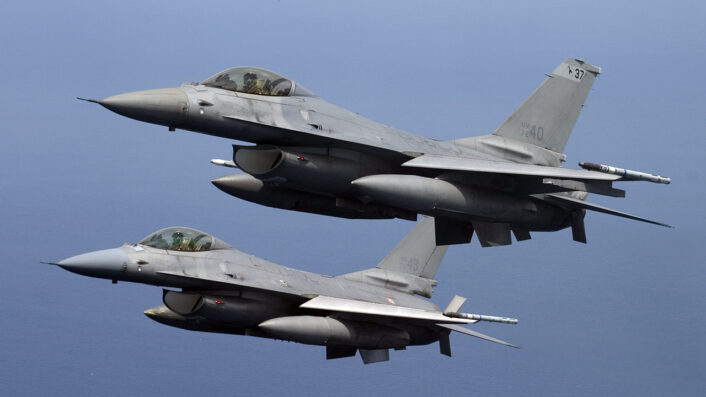
The Italian Vipers also took part in Air Policing missions enforcing NFZs (No Fly Zones) during important events like “Operation Jupiter” carried out during the inauguration of the pontificate of Pope Benedict XVI in 2005; the 2006 Turin Winter Olympics; and the “Giotto 2009” operation to protect the G8 summit in L’Aquila.
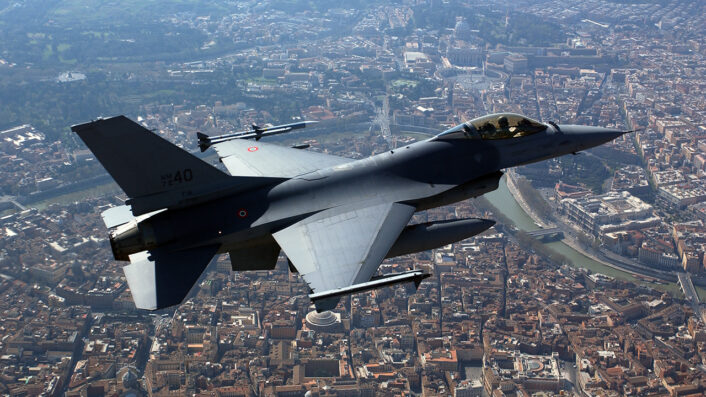
Armament
Italian Vipers were used in air defense missions, so their armament did not include bombs or rockets. Typically, they carried AIM-120 missiles on the wingtips, although AIM-9L missiles were also used. During air-to-air combat training, an ACMI pod was often carried.
Underwing pylons often featured AIM-9L, AIM-120 missiles, or an AMD radar pod. These pods, resembling the body of a Sidewinder missile without the front wings, were painted fluorescent orange and served to enhance the aircraft’s radar signal when necessary.
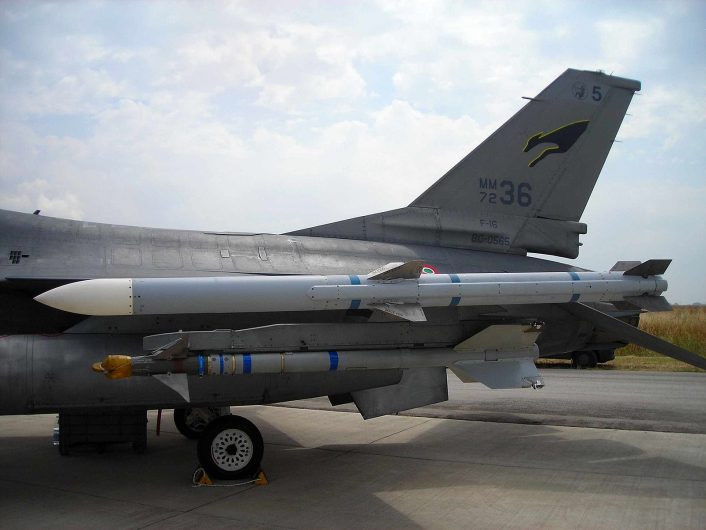
The middle wing pylons were rarely used, but when attached, they could carry additional missiles or, more commonly, a travel pod. The inner wing pylons almost always held 370 US Gal tanks, which were seldom removed since most missions were flown with tanks attached.
The centerline pylon could accommodate a 300 US Gal tank or a travel pod.
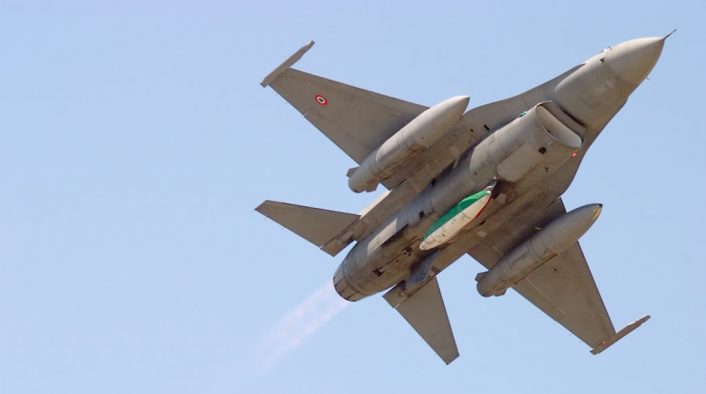
Unit Markings
The markings of the Italian F-16s evolved over time, reflecting squadron affiliations and operational duties. The aircraft operated from Cervia and Trapani, with the latter’s fleet showing signs of weathering due to exposure to the elements, resulting in the distinctive aluminum appearance of the aircraft’s exterior.
At the beginning, the aircraft were pretty clean, with almost no markings at all, just a small Wing emblem on the upper part of the tail. Beginning in 2008, the Italian F-16s became more “colorful” with tails receiving more insignia and squadron markings.
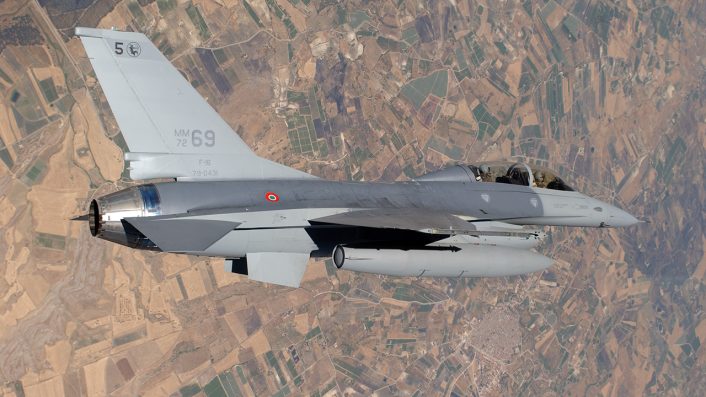
The 5° Stormo at Cervia applied a stylized Veltro (Italian for Greyhound and the callsign of the 23° Gruppo) on both sides of the tail.
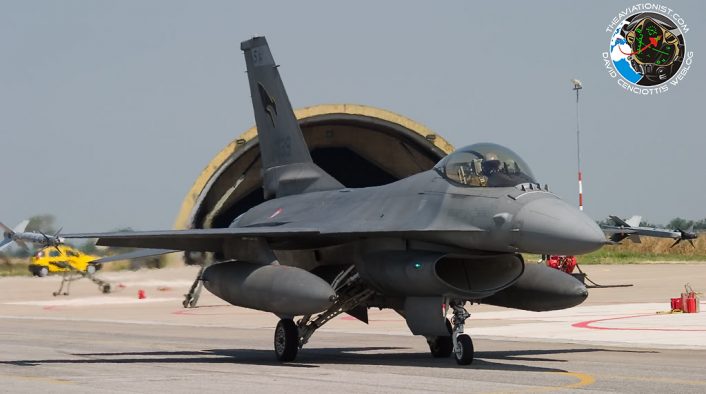
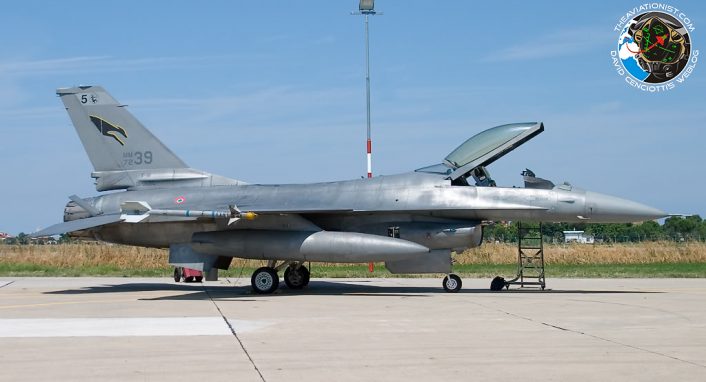
For what deals the 37° Stormo at Trapani, since the two Squadrons (the 10° and 18° Gruppo) shared the aircraft, all the Vipers of the Wing were painted with the 10° Gruppo badge on one side of the tail and the 18° Gruppo one on the other side. There was no rule: some aircraft had the Francesco Baracca’s rearing horse of the 10° Gruppo on the left side and the 18° Gruppo badge on the right one, others viceversa.
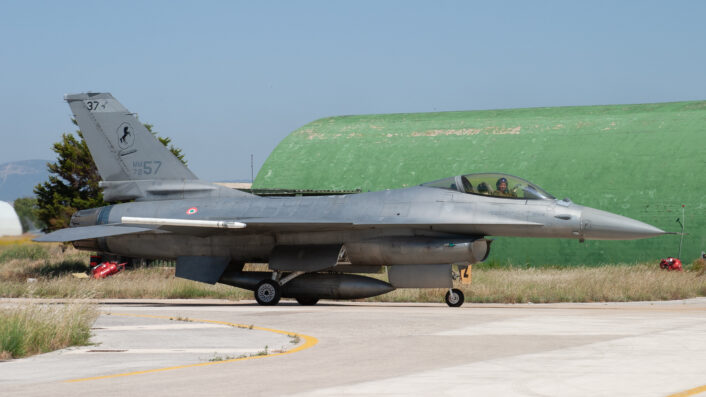
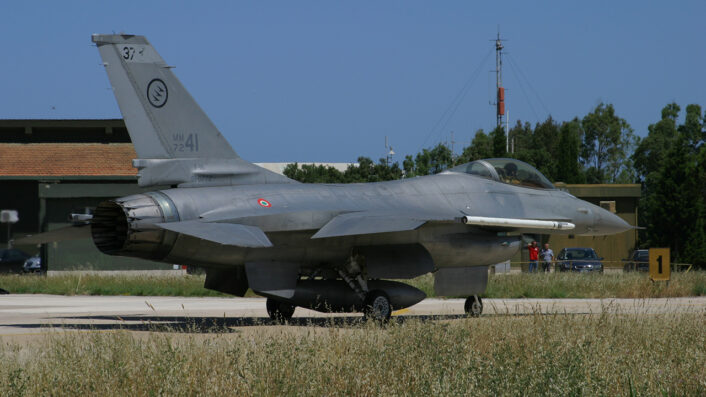
Some of the 37° Stormo’s F-16s also sported the checkered (traditional marking of the 18th Squadron) or X-marked (from the Roman number 10 of the 10th Squadron) rudder.
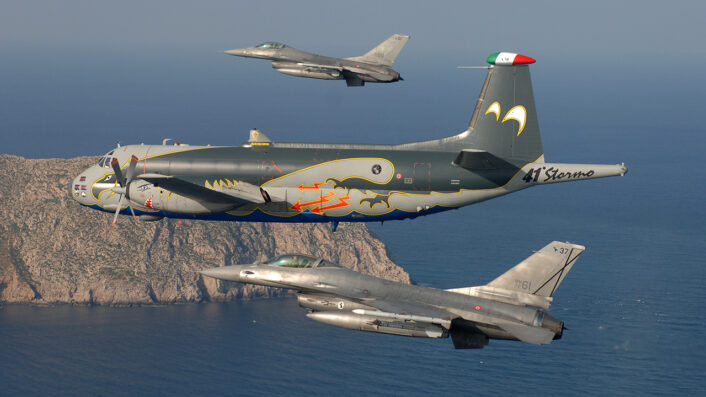
Special colors
The first special markings were applied to the Italian Vipers during the NATO Tactical Leader Program (TLP) course at Florennes AB in Belgium.
On Jul. 9, 2006, after Italy won the World Cup against France, crew members painted a depiction of the cup and four golden stars (representing Italy’s championships) on the Vipers’ tails, much to the disappointment of their French counterparts. The involved aircraft were MM7261 and MM7250, which also featured a large Italian flag on the right side of the front fuselage.
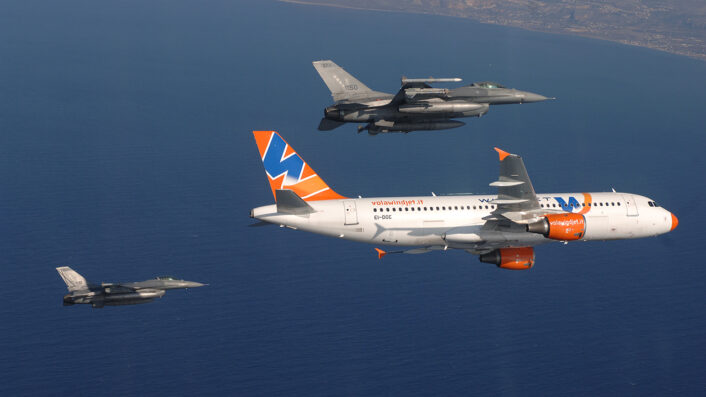
The first official Italian special color scheme was applied to MM7251 from the 5th Stormo/23rd Gruppo in celebration of the 90th anniversary of the 23rd Gruppo in 2008. Painted in Cervia during the second week of June 2008, this aircraft was unveiled to the public during the Spotter Day on June 20, 2008.
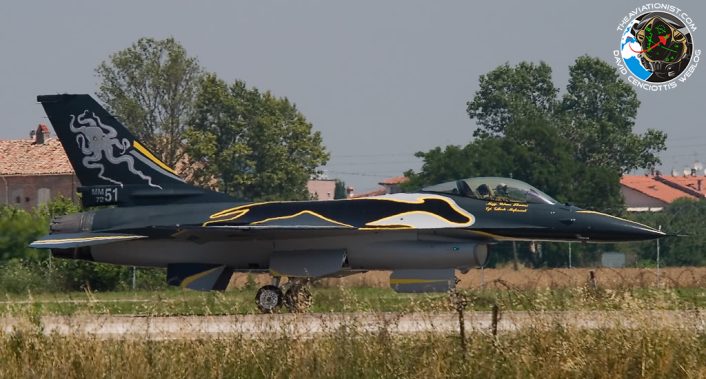
This special color scheme honored the 23rd Gruppo and its Greyhound mascot, as well as its oldest flight, the 71st Squadriglia, represented by an octopus insignia.
Despite the protective measures, some paint chipping was evident during the Spotter Day on the IFF “bird slicer” antennas in front of the cockpit. This issue was addressed in the following weeks, and a couple of 370 US Gal tanks were painted to match MM7251.
Although missiles could be fitted to this special color scheme aircraft for operational missions, it retained its unique paint scheme until at least October 2008. However, it was typically seen with 16S210 missile launchers (AIM-9 missile launchers) on the tips, while the LAU-129 launcher, capable of firing both Sidewinders and AMRAAMs, was more commonly used on Italian Vipers.
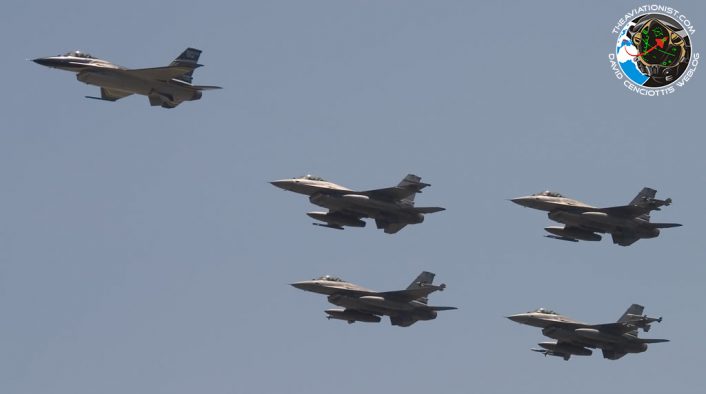
On Jun. 8, 2009, the 37° Stormo presented two F-16 ADF jets (MM7240 and MM7249) painted in special colour schemes to celebrate the 1,000 Flight Hours achieved by both commanders of the 10° and 18° Gruppo, Maj. Salvatore “Cheero” Ferrara and Maj. Maurizio “Masa” De Angelis.
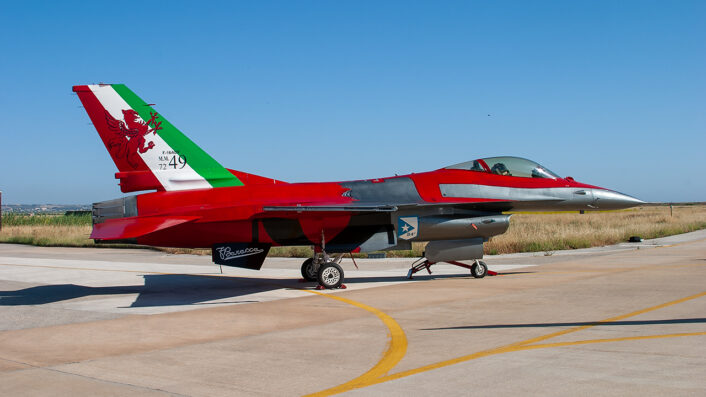
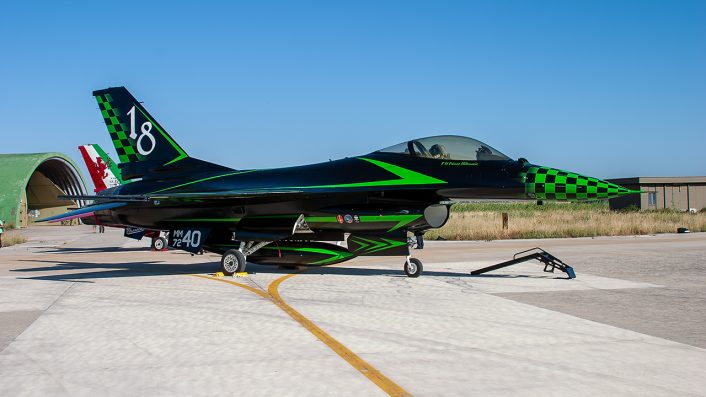
The two “specials” performed an interesting air display that involved also other 7 aircraft of both Squadrons, comprising MM7239 that was a sort of semi-special having the tail painted with the colours of the 10° Gruppo on the right hand side and the ones of the 18° Gruppo on the left hand side: MM7253, 7257, 7241, 7260, 7250, 7267, 7239, 7240, 7249.
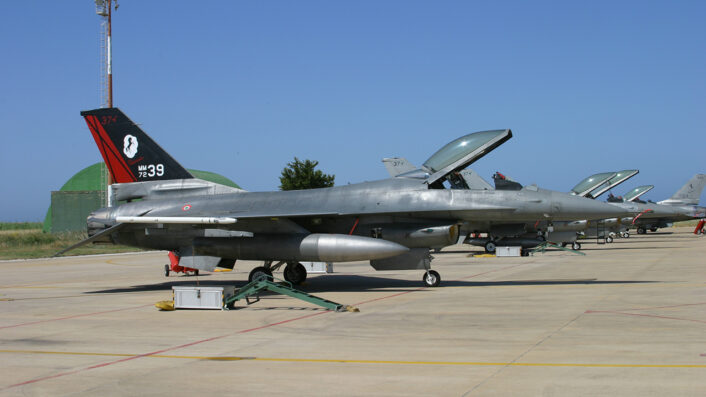
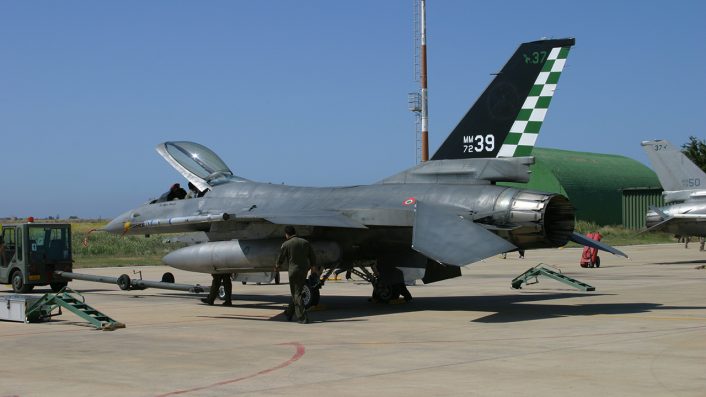
On Apr. 16 and 17, 2010, the 5° Stormo organised an event dubbed “Con la Diana sul Petto” to bid farewell to the F-16. The locally-based 23° Gruppo was about to handover its remaining “Vipers” to the 18° Gruppo that would be the last Italian squadron to fly with the F-16.
A new special colour and a new special tail were presented during the event: the aircraft with full special livery was MM7244, sporting a large “Viper” to homage the nickname of the aircraft; while MM7236 had a special tail with the Diana the Hunter in two different versions on the two faces of the tail.
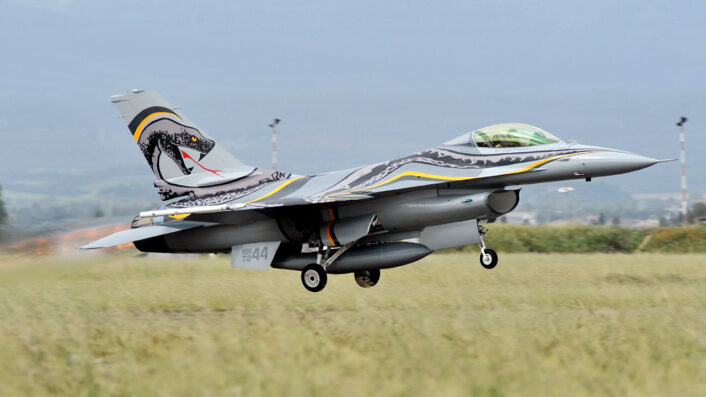
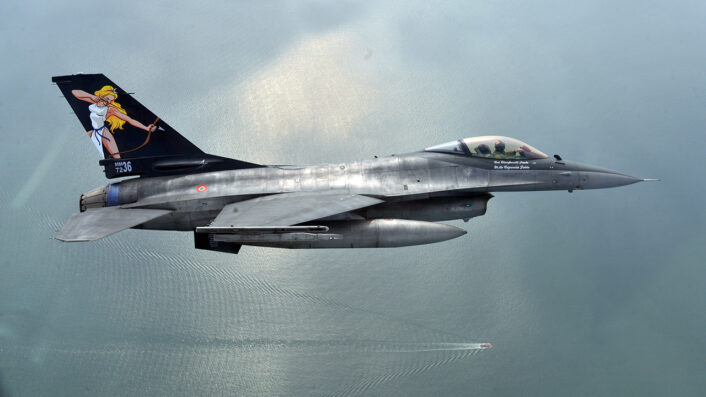
Throughout the years there were also other special tails: MM7253, that celebrated the 40,000 FH of the fleet and the already mentioned MM7239, that sported different schemes on the two sides of the tail.
The Libya Air War
Although the first batch of F-16s were returned to the U.S. in 2010, in 2011 the Italian F-16s played an important role during the Libyan crisis and subsequent campaign.
During the war, the Italian F-16ADF of the 18° Gruppo flew more than 1,559 flying hours and 348 missions since the early stages of US-coordinated Operation Odyssey Dawn begun on Mar. 19, 2011.
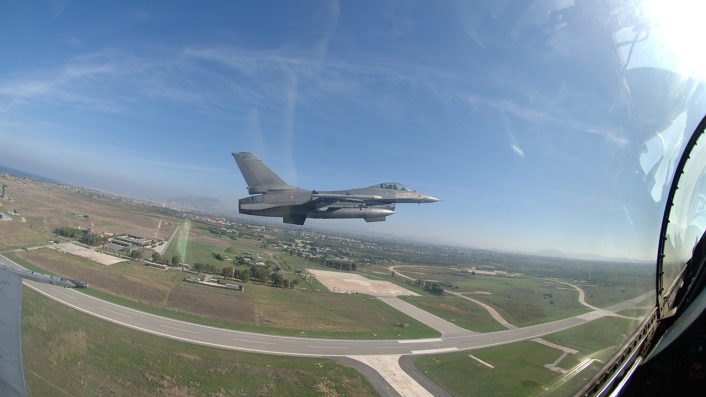
Flying also in a “heavy” configuration, that included two drop tanks, four AMRAAM (Advanced Medium Range Air-to-Air Missiles) and two AIM-9L Sidewinders, the Squadron’s “Vipers” escorted the first Italian SEAD packages inside the Libyan airspace. With the beginning of NATO’s Operation Unified Protector at 06.00GMT on Mar. 31, 2011 and until the end of the air campaign at 23.59 GMT on Oct. 31, 2011, the Italian F-16s, alongside all the other Italian Air Force assets under the Task Group Air “Birgi”, flew air defense and combat air patrol missions required to enforce the No-Fly Zone over Libya and to ensure the air superiority needed to successfully accomplish the assigned mission.
Furthermore, in connection with the Libyan crisis, the 18th Squadron ensured the Quick Reaction Alert service at an heightened level of readiness with F-16s ready to take off in few minutes in order to intercept and face any suspicious aircraft.
The Phase Out
In June 2011, the fleet achieved 45,000 flight hours, and the same year, the Ministry of Defence, extending the existing agreement, kept 14 F-16s based at Trapani-Birgi, confirming the end date of the contract of June 2012.
On May 8, 2012, eight of the remaining U.S. F-16 fighter jets leased by the Italian Air Force to strengthen Italy’s air defense until the full maturity of the Eurofighter Typhoon made a stopover at Lajes Field, Azores, on their way back to the U.S.
The aircraft had departed from Trapani, in Sicily, and headed towards North America as “Retro 31”, a flight of six “Vipers” accompanied by a 22ARW KC-135R tanker and a supporting Italian C-130.

The remaining two planes, used as spares and arriving via Monte Real near Leiria, in the western coast of mainland Portogallo, returned to Trapani where they would remain with the past 8 ones for a few more weeks, until the Italian Air Force officially retired the type on May 25, 2012.
Before being returned to the U.S. Air Force, the aircraft were removed all the residual special markings and insignia.
The Italian Vipers, were returned to the to Davis-Monthan AFB, Arizona, where the aircraft are kept in storage by the 309th Aerospace Maintenance and Regeneration Group (AMARG) at the local “Boneyard”.
In the end, the Italian Air Force Viper logged a total of 48,000 flight hours.
Special thanks to Pierpaolo Maglio, an F-16 expert , who provided invaluable assistance and research expertise on this topic to the author throughout the years.

